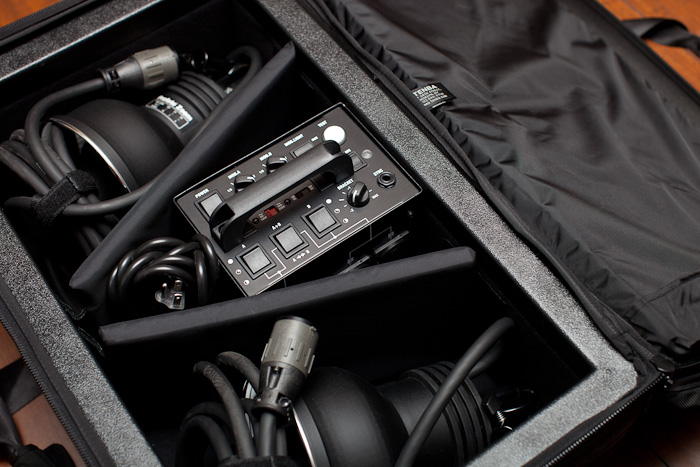
When I think of high-end photography lighting companies, Profoto is the first one that comes to mind. Originally founded in the late 1960s, Profoto has been consistently producing high-quality equipment, making them the first choice for professional photographers. Profoto sent along an Acute2R 1200 Value Pack with Case which included the power pack, two Acute D4 heads and Tenba carrying case specifically designed for Profoto. This accompanied the Profoto Acute2 Ringflash.
So, how did they perform?
What’s In The Kit
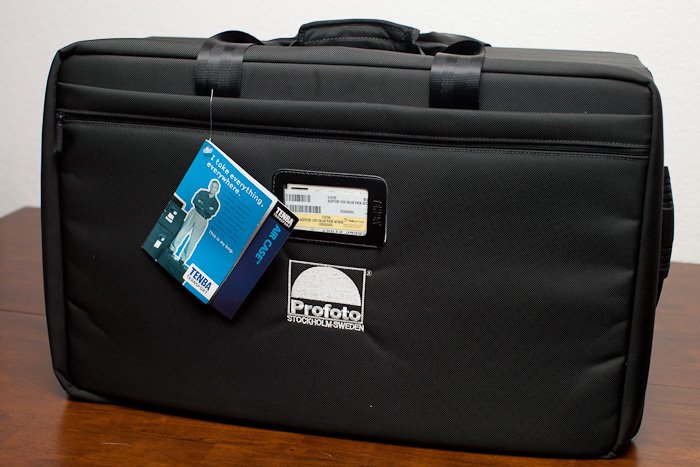
The first thing that will catch your attention is the Tenba bag that holds all of that shiny gear. This is a beefy bag. It features hard-shelled sides under typical bag canvas. Although I gently handled the equipment, I bet this thing would survive a hurricane.
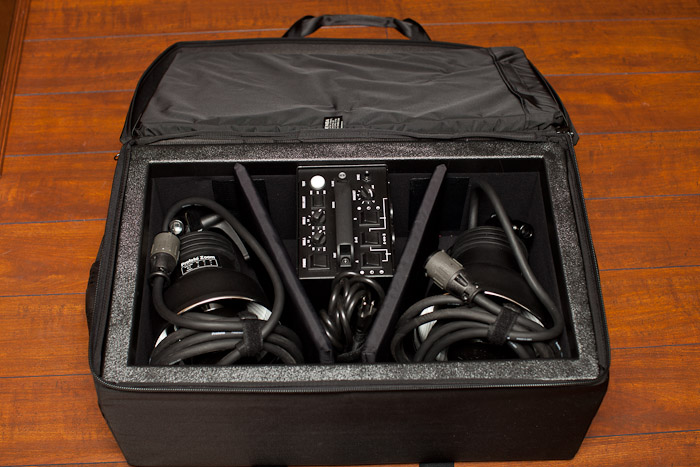
The inside has two thick foam dividers arranged in a triangle to fit both D4 heads, their cords, and the Acute2R pack. Even with everything in there, there is still plenty of space to fit more equipment like: wireless triggers, cords, gray/color cards, etc.
The case isn’t perfect, though. Despite its handles, the case gets awfully heavy when fully loaded. Hopefully, your shooting location is nearby or else you’ll be exhausted when you get there.
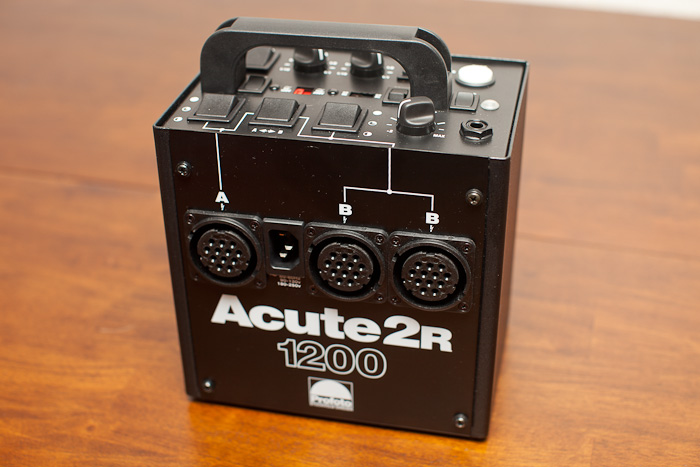
For what I was testing, the Acute2R 1200 generator provided more than enough power. You can plug in up to 3 lights into the pack, 1 into group A and two into group B. These groups can be controlled collectively with even distribution of power, or you can set each group’s power individually. With a grid of buttons on top, it looks like an instrument panel from an airplane cockpit. I had to consult the manual a couple of times to let it all sink in.
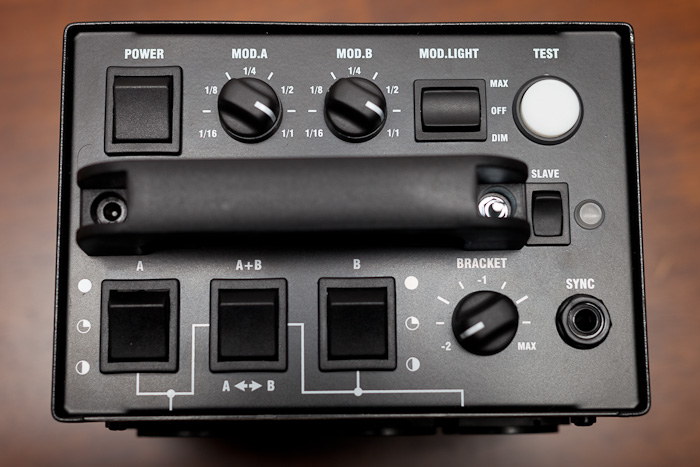
Available buttons on the unit include:
- Power.
- 2 modeling light dials to independently change the two groups’ modeling light output (quite useful).
- A rocker switch to turn the modeling lights on full power, off, or letting the dials set the power.
- A test button to check your power output and to dump excess power after turning the power down.
- A slave button to turn on or off the optical slave abilities.
- The actual strobe power rockers to control primary output of the lights.
- A power distribution switch.
- A bracket dial to further adjust the power.
- A sync port (for camera or light meter).
- Under the handle (not pictured), the sound rocker to turn on/off the audible sound to tell you the strobes are ready to fire again (one of my favorite features).
- Also not pictured, a “Fast” button to change so that the strobes recharge slowly in the event you’re using a power source that might blow a fuse if used to heavy.
Weighing in at just over 12 pounds, you could really knock out would-be thieves.
The Acute2 generator also has a built-in pocket wizard so by just purchasing one Pocket Wizard for your camera, you now have full wireless triggering for your lights.
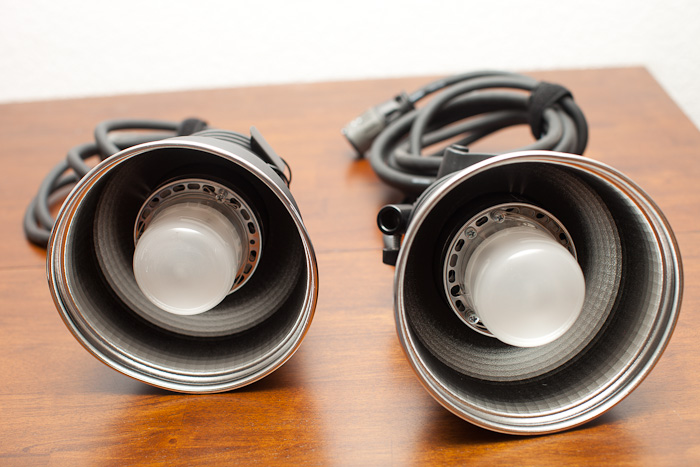
The Acute D4 heads are rather simple in design. They are lightweight since the generator handles all the energy.The only button is a knob which turns the modeling light on or off; this can also be controlled from the generator. Even after strobing them many times during a shoot, their internal fans help them stay nice and cool.
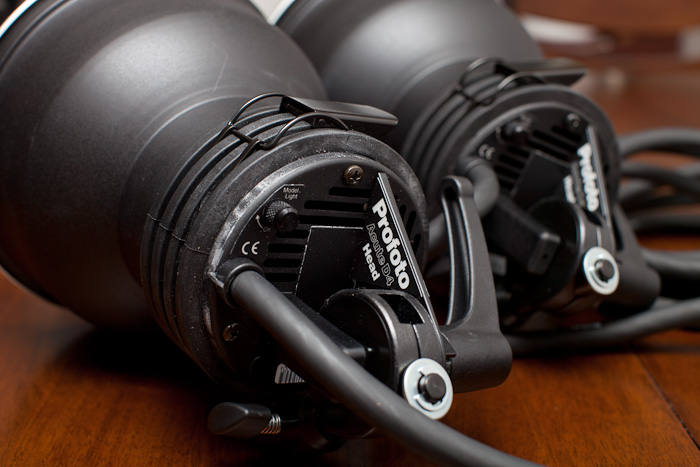
Like the D4 heads, the Acute2 Ringflash is pretty lightweight with no buttons at all.The assembly is simple: screw it onto your camera’s tripod mount with the lens going through the middle and set the power with the generator. Even though the carrying case I had didn’t have enough room for this light, I think it would be difficult to transport due to its awkward shape. It needs sufficient padding to keep this $1500 light safe.
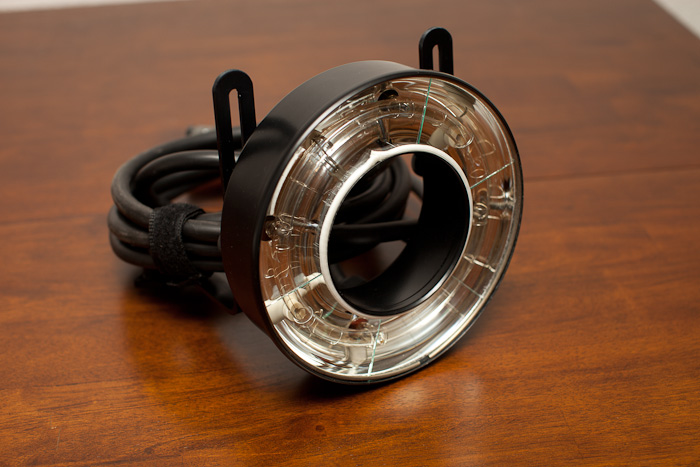
Usage

Lets get my gripes out of the way first, which are few and far between.
Gripe #1: how to set the power for the light(s). I’m sure if I were to use this system everyday, it would just come second nature. Many factors go into the power setting: how many lights are plugged in, how you have the power distribution switch set (combined/independent), power setting of each group, and finally the bracketing dial. I’m not going to go into further detail on the various combinations but it definitely wasn’t fun monkeying with the settings on location.
Gripe #2: the power rocker switches themselves, but this is partly my fault. Based on the image, you can see that clicking the switch up is full power to that group (full circle), clicking the switch to the middle is quarter power, and all the way down is half power. Is it just me or is that sort of odd? I would think – I did think – that it would be full power, then half power then quarter power. Anyway, I went through half a shoot before I realized that.
Gripe #3: the price, which is just understood at this point for anything from Profoto. As much as I’d love to slap the credit card down for the system I tested, I think it would be better for a down payment on a mortgage or buying a car.
Now for the good parts of the system: everything else. This is a professional kit and unsurprisingly produces professional quality. There were consistent results with very little white balance tweaks needed (I don’t set a custom white balance when shooting) and it had a fast recharge time even with full power. Though trivial for a kit of this caliber, I fell in love with the audible beep that signals when the lights were charged.

I used this setup on a couple different shoots while I had it. One of which was a paying client for a holiday card (the Ringlight was not used for this). I didn’t have any light modifiers at the time that would work with this system and I definitely didn’t want to shoot bare strobes for something like a holiday card. So I improvised. Knowing the lights ran very cool during use, I grabbed two pillow cases and draped them over the lights. It worked like a charm. I was more than surprised at how little heat the lights give off (with the modeling lights turned off).
Next was a shoot with a good friend and fellow Seattle photographer, Mike Folden, at his studio. He volunteered to be the model during this session and, again, I was more than impressed with the results. Here, we took full advantage of the three lights; the Ringlight as the key and the D4’s for rim/background.
Throughout all of the shoots, I will say the amount of wires strewn everywhere was somewhat unsettling and I was afraid someone would trip over them. I really would have had to bust out the credit card to pay for the review units. This is where speedlights reign supreme.
Let’s talk about the Ringlight. Ringflashes in general create a very unique look as the light spreads out equally in all directions from the lens. This results in absolutely no shadows on your subject. Another reason why people love this type of light is the amazing catchlights you get in the subjects eyes.

Personally, I think I might be in love with the effect this creates. I know our Editor-In-Chief loves them and has even used and reviewed some of them for the site (you can see our reviews here for the Orbis as well as Ray Ringflash). Even taking some quick shots in the kitchen with no other lights made some fantastic images. You can also get the person right up against a wall and get a very unique image due to the perfectly halo’ed shadow on the wall behind them.
Conclusion
This kit is not going to be for everyone because of the price. It’s a very high-end kit and it carries with it the same sort of price you would imagine. However, if you are one of those that can pick this up or maybe even rent it for a project at a time, you won’t be disappointed. Keep in mind that what I tested here actually was two separate things from Profoto: the Acute2R 1200 Value Pack with Case and the Profoto Acute2 Ringflash. If you’re just looking to get into the lighting game or maybe purchasing equipment for a new studio, the Value Pack would be a smart decision you have a little money to throw down. After trying the Ringflash, I’m in love and it is now on my must-haves for the near future.
If you found this post helpful and would like to be a part of helping them continue, please consider donating through PayPal.
Please Support The Phoblographer
We love to bring you guys the latest and greatest news and gear related stuff. However, we can’t keep doing that unless we have your continued support. If you would like to purchase any of the items mentioned, please do so by clicking our links first and then purchasing the items as we then get a small portion of the sale to help run the website.





